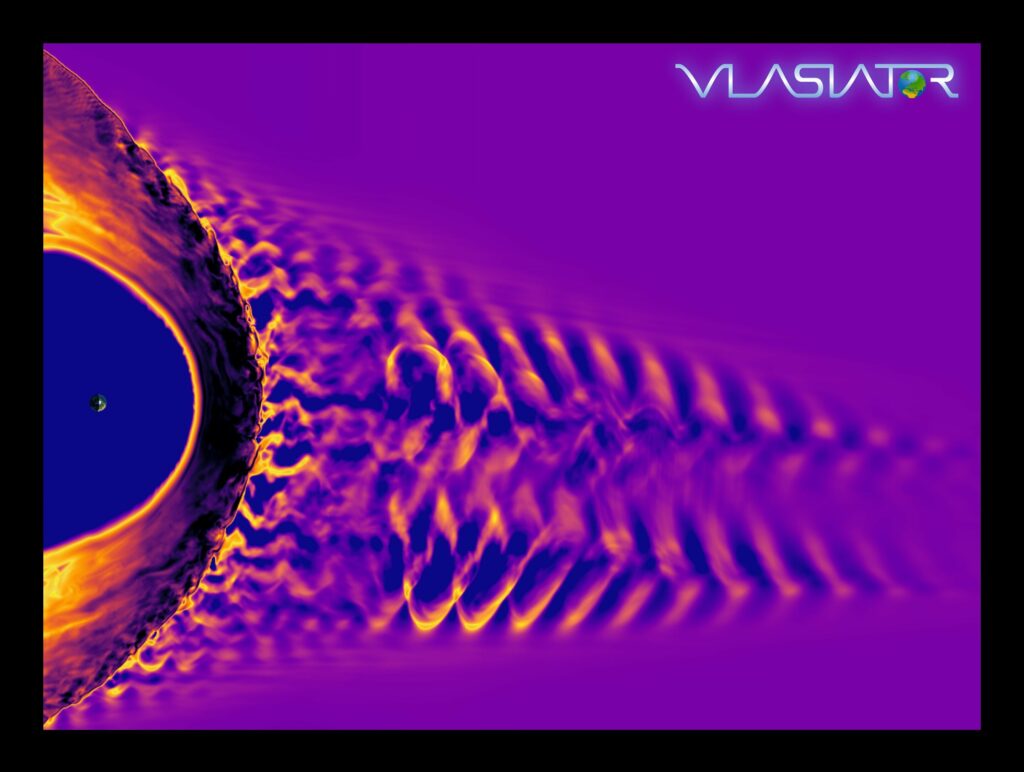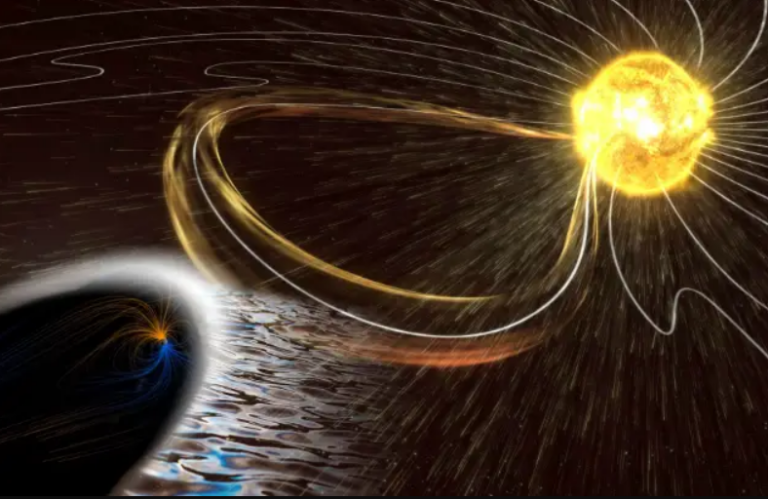The inaugural recording of Earth’s magnetic melody amidst a solar storm.

The information obtained from ESA’s Cluster mission has revealed a fascinating occurrence: the harmonic “song” emitted by Earth when it is impacted by a solar storm.
This unique melody is created by the generation of waves in Earth’s magnetic field following a collision with a solar storm. These storms, which involve the release of electrically charged particles from the sun’s atmosphere, trigger the enchanting symphony captured by the Cluster mission.
Under the leadership of Lucile Turc, a former ESA research fellow now associated with the University of Helsinki, Finland, a dedicated team made this breakthrough by carefully analyzing data obtained from the Cluster Science Archive. This archive acts as a storage facility for data gathered during Cluster’s extensive mission that has spanned almost two decades.
Consisting of four spacecraft orbiting Earth in synchronization, the Cluster mission is focused on studying Earth’s magnetic environment and its interaction with the solar wind – a continuous stream of particles emitted by the sun into the Solar System.
As the Cluster spacecraft move along their orbits, they pass through the foreshock region, the initial area where particles come into contact with during the onset of a solar storm. Analysis of data collected between 2001 and 2005 shows that the spacecraft encountered six such collisions, providing data on the resulting magnetic waves.
Further investigation reveals the intricate magnetic wave patterns within the foreshock during these collisions, exceeding previous assumptions.
Our research underscores the significant changes that solar storms bring about in the foreshock area.
During periods of calm, when solar storm activity is absent, the sound produced is a basic, low-pitched tune characterized by a single frequency. However, when a solar storm occurs, the frequency of the waves doubles, with variations depending on the strength of the storm’s magnetic field.
Lucile explains, “The storm essentially recalibrates the foreshock, modifying both the frequency and the complexity.”
As the storm advances, the once uniform frequency evolves into a diverse array of higher frequencies, as demonstrated through computer simulations utilizing the Vlasiator model created at the University of Helsinki.
The modifications occurring in the foreshock have a substantial impact on the transmission of solar storms towards the Earth’s surface. While the exact processes are not fully understood, it is clear that the energy produced by foreshock waves is directed towards Earth by incoming solar storms, overcoming the obstacle of space.
Upon reaching the bow shock, a magnetic area that decelerates solar wind particles prior to their interaction with Earth’s magnetic field, the interaction of magnetic waves causes additional changes to its characteristics, which could impact the dispersion of energy from solar storms.
Following this, Earth’s magnetic fields vibrate at the same frequency as the waves, aiding in the transfer of magnetic disruptions to the surface around ten minutes after they are produced.
Lucile and her team are committed to understanding the complexities of these intricate wave patterns. She states, “Although changes in frequency were predicted, the level of complexity in the waveforms came as a surprise.”
This movie showcases the foreshock above Earth, the initial region of our planet’s magnetic environment that solar wind particles encounter, being engulfed by a magnetic cloud during a solar storm. The waves tend to become smaller and higher in frequency compared to those observed during calm space weather conditions. As a result, they break up into a more complex pattern containing various frequencies. Credit: Vlasiator team, University of Helsinki.
Do not forget to share your opinion with us to provide you with the best posts !




0 Comments